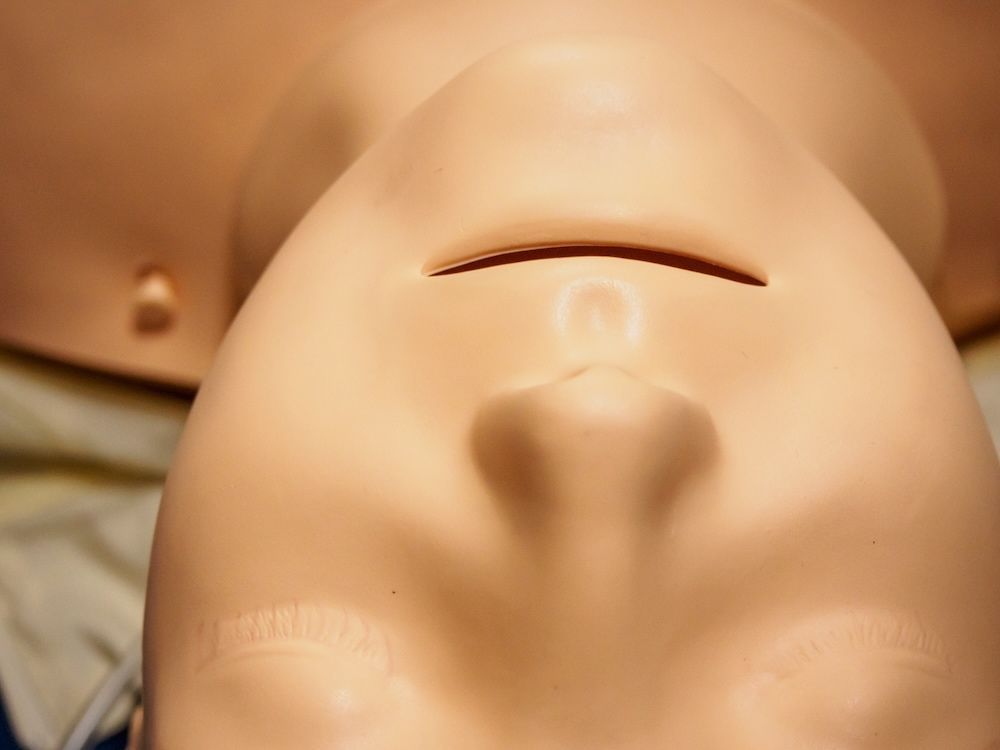A previously posted HealthySimulation.com article entitled “Physiology: The Force Behind Healthcare Simulation – A Guide for Techs, Part 10: Intro Cardiac Rhythms” by Kim Baily PhD, MSN, RN, CNE, introduced basic cardiac function and interpretation of cardiac rhythms. This article will highlight sinus tachycardia and bradycardia as well as atrial dysrhythmias. Please note this article is an introductory summary and does go into extensive detail about heart dysrhythmias (aka arrhythmias). Please see the downloadable page with rhythm strips.
Developing simulation technicians (aka operation specialists) knowledge of physiology would likely increase their ability to participate, plan and support the nursing simulation activities which in turn improve student learning. Many clinical simulation scenarios involve a change in patient status which often includes a change in cardiac function.
This entire series linked below is designed to help Sim Techs better understand physiology during their simulation scenario activities.
Use the following steps to analyze cardiac rhythms:
- Determine rhythm: Does the rhythm have a regular pattern. Is the time between P waves equal and how many P waves occur in one minute. This information yields the atrial contraction rate and its regularity.
- Measure the R to R distance – ventricular rhythm. How many QRS complexes per minute and are they equally spaced.
- Is there one P wave for every QRS or are there extra P waves or QRS complexes?
- Measure intervals and segments including PR interval, ST segment, and QT.
- Are Q waves present.
Sinus Bradycardia (Rhythm 1) : A rhythm with a rate less than normal (<60 beats per minute). See attached document.
- Determine rhythm: Does the rhythm have a regular pattern. Is the time between P waves equal and how many P waves occur in one minute. This information yields the atrial contraction rate and its regularity.
- P waves are regular.
- # of little squares between P waves = 29
- 29 x 0.04 sec = 1.16 sec, 60/1.16 = 52
- Measure the R to R distance – ventricular rhythm. How many QRS complexes per minute and are they equally spaced.
- # of R complexes in 6 second strip = 5
- Rate = 5 x 10 = 50
- Rate less than 60.
- There is one P wave for every QRS.
- QRS is narrow.
In sinus bradycardia the rate is between 40-60. This may be normal in young adults and athletes. The rhythm may be caused by stimulation of the parasympathetic nervous system (PSNS) (vagal tone), problems with the sinoatrial node or conduction pathways of the heart, anorexia nervosa, atherosclerotic heart disease including MI, low hormone levels such as Addison’s disease (low adrenal gland hormones) or Myxedema (low thyroid hormone), hypothermia, increased ICP, medications (beta blockers, digoxin, Ca channel blockers). Because the rate is low, insufficient oxygen reaches the brain and other organs of the body. Symptoms may include chest pressure/pain, dyspnea, low BP, dizziness, seizure, confusion, fainting (syncope). The treatment involves reversing obvious causes, medication (atropine), stimulation of the Sympathetic Nervous System (SNS), suppression of the PSNS, Pacemaker.
Sinus Tachycardia (Rhythm 2) : A rhythm with a rate greater than normal (>100 beats per minute) but with a regular pattern. See attached document.
- Regular pattern but atrial contraction rate >100.
- # of little squares between R waves = 11
- 11 x 0.04 sec = 0.44 sec, 60/0.44 = 136
- # of R complexes in 6 second strip = 13. Rate = 13 x 10 = 130
- Rate > 100, therefore tachycardia.
- Regular rhythm, one P wave for every QRS. No missed or extra complexes, QRS narrow.
There are many normal reasons why the heart might beat faster such as with a fever, during exercise, or with anxiety or stress. Other causes include hypoxia (insufficient oxygen), caffeine, smoking, anemia, anxiety, fever, hemorrhage, low BP (hypotension), pain, shock, medications particularly stimulants (dopamine, epinephrine, cocaine), myocardial damage due to heart disease. Symptoms include chest pressure/pain, dyspnea, fluttering in chest. Treatment consists mainly of eliminating the cause of the tachycardia
Atrial/Supraventricular Dysrhythmias: These are dysrhythmias that start in the heart’s upper chambers, called the atrium, or at the gateway to the lower chambers are called supraventricular arrhythmias. Remember usually, the SA nodes dominates the cardiac rhythm however sometimes other areas in the area start to dominate the SA node and take over the SA node’s pacemaker function. Supraventricular dysrhythmias are known by their fast heart rates, or tachycardia. The fast pace is sometimes paired with an uneven heart rhythm. Sometimes the upper and lower chambers beat at different rates. Types of supraventricular arrhythmias include:
Atrial Fibrillation (Rhythm 3): This is one of the most common types of arrhythmia. The heart can race at more than 400 beats per minute! The ECG waveform is wiggly or wormly and it is impossible to identify specific P waves. Because of the multiple irritable foci around the atria, the atria do not contract as a unit, instead disorganized twitching of the atria occurs.
- EKG rhythm is very irregular with no countable P waves.
- Periodically and irregularly QRS complexes are seen, however, the QRS are narrow and normal. Electrical conduction through the AV node reaches the ventricles but in an irregular manner. When assessing patients, the radial pulse will be irregular with no particular pattern (irregularly, irregular). Heart rate should be calculated from chest auscultation if possible but if radial pulse is measured, the pulse should be counted for at least one minute.
Symptoms: The AV node blocks some of the atrial signals from moving into the ventricles however if the ventricular rate becomes very rapid, cardiac output will decrease. The contraction of the atria and the final push of blood from the atria into the ventricles (atrial kick) contributes to 20% of cardiac output. In atrial fibrillation, atrial kick is lost and cardiac output decreases. In addition, when ventricular contraction becomes too fast, the ventricles do not have time to fill between each contraction. This leads to a further reduction in cardiac output leading to hypoxia. Palpitations, weakness, fatigue, lightheadedness, shortness of breath and dizziness may occur. The time the heart spends in diastole (relaxation) is reduced due to the fast heart rate. Since coronary arteries fill during diastole, blood flow to the coronary arteries supplying the heart muscles is reduced. Angina (pain due to hypoxia in heart muscles) may occur particularly in patients with preexisting coronary artery disease. Finally because blood tends to pool in the atria, blood clots can form which in turn can lead to pulmonary embolism or stroke.
Treatment: Initial medications to control the high heart rates found in atrial fibrillation include beta blockers, calcium channel blockers and digoxin. Once heart rate is controlled, medications that control rhythms may be prescribed such as anti sodium-channel and anti-potassium channel drugs. Anticoagulants such as coumadin may also be prescribed to prevent clot formation.
Atrial Flutter (Rhythm 4). Atrial flutter is typically caused by a re-entry circuit that is contained within the atria. These reentry circuits are very fast. They are typically cycling 300 times a minute. The signal that tells the upper chambers to beat may be disrupted when it encounters damaged tissue, such as a scar. The signal may find an alternate path, creating a loop that causes the upper chamber to beat repeatedly. As with atrial fibrillation, some but not all of these signals travel to the lower chambers. As a result, the upper chambers and lower chambers beat at different rates. Cardiac output decreases for the same reasons as in atrial fibrillation.
- No visible P waves but F waves can be seen at 300 cycles per minute (V1 lead). The F wave may be hidden in the QRS complex in other EKG leads. When seen, the rhythm is often described as “sawtooth”.
- QRS complexes may have a regular or irregular rate but look normal in appearance (narrow QRS).
- Ventricular rate is 100-250 contractions per minute.
- PR is not measurable.
Symptoms and treatments are similar to atrial fibrillation.
Further Reading on “Atrial arrhythmias”: In adults a tachycardia is any heart rate greater than 100 beats per minute. Supraventricular tachycardias may be divided into two distinct groups depending on whether they arise from the atria or the atrioventricular junction. This article will consider those arising from the atria: sinus tachycardia, atrial fibrillation, atrial flutter, and atrial tachycardia. Tachycardias arising from re-entry circuits in the atrioventricular junction will be considered in the next article in the series.
The clinical importance of a tachycardia in an individual patient is related to the ventricular rate, the presence of any underlying heart disease, and the integrity of cardiovascular reflexes. Coronary blood flow occurs during diastole, and as the heart rate increases diastole shortens. In the presence of coronary atherosclerosis, blood flow may become critical and anginal-type chest pain may result. Similar chest pain, which is not related to myocardial ischaemia, may also occur. Reduced cardiac performance produces symptoms of faintness or syncope and leads to increased sympathetic stimulation, which may increase the heart rate further.
Read the Entire Physiology: The “Force” Behind Healthcare Simulation HealthySimulation.com Article Series:
- Part 1: Blood Pressure
- Part 2: Heart & Respiratory Rate
- Part 3: Pulse Oximetry
- Part 4: Diabetes
- Part 4B: Hypoglycemia & Excel Template for Simulated EHR
- Part 4C: Insulin
- Part 5: Sepsis
- Part 6A: Hypovolemia (Intro)
- Part 6B: Hypovolemia (Treatment & Simulation Tips)
- Part 7A: IV Fluids & Bags
- Part 7B: IV Pumps & Site Access
- Part 7C: PCA for Pain
- Part 8: ABGs
- Part 9: Sepsis Labs
- Part 10: Intro to Cardiac Rhythms
Have a story to share with the global healthcare simulation community? Submit your simulation news and resources here!







